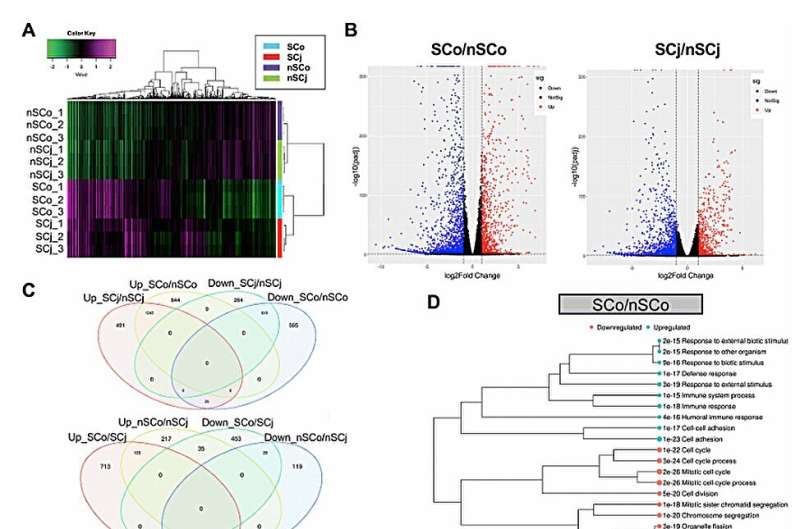This article has been reviewed according to Science X's editorial process and policies. Editors have highlighted the following attributes while ensuring the content's credibility:
fact-checked
proofread
Study: Gene expression signatures of human senescent corneal and conjunctival epithelial cells

A new research paper titled "Gene expression signatures of human senescent corneal and conjunctival epithelial cells" has been published in Aging.
In this new study, researchers Koji Kitazawa, Akifumi Matsumoto, Kohsaku Numa, Yasufumi Tomioka, Zhixin A. Zhang, Yohei Yamashita, Chie Sotozono, Pierre-Yves Desprez, and Judith Campisi from the Buck Institute for Research on Aging, Kyoto Prefectural University of Medicine and Lawrence Berkeley National Laboratory aimed to investigate the senescent phenotypes of human corneal and conjunctival epithelial cells.
The researchers write, "Here, we induced cellular senescence in human corneal and conjunctival epithelium using X-irradiation, and analyzed gene expression profiles of each cell type to determine the characteristics of senescent ocular surface cells."
The team examined cell morphology, senescence-associated β-galactosidase (SA-β-gal) activity, cell proliferation, and expression of senescence markers (p16 and p21). RNA sequencing analysis was conducted to compare gene expression profiles between senescent and non-senescent cells. Finally, the potential involvement of senescent cells in the pathogenesis of ocular surface diseases was investigated.
X-irradiated corneal and conjunctival epithelial cells exhibited typical senescence phenotypes, i.e., flattened morphologies, increased SA-β-gal activity, decreased cell proliferation, and increased expression of senescence markers, p16 and p21. RNA-seq analysis revealed substantial differences in gene expression profiles between senescent corneal (SCo) and conjunctival epithelial cells (SCj).
Moreover, SCj were detected in pathological conjunctival tissues associated with limbal stem cell deficiency (LSCD) due to Stevens-Johnson syndrome or chemical burns, potentially being involved in abnormal differentiation.
"This study highlights the cellular and molecular characteristics of senescent ocular surface cells, particularly in SCj, that show abnormal keratin expression, and their potential roles in severe ocular surface diseases and pathology," say the authors.
More information: Koji Kitazawa et al, Gene expression signatures of human senescent corneal and conjunctival epithelial cells, Aging (2023). DOI: 10.18632/aging.205113


















